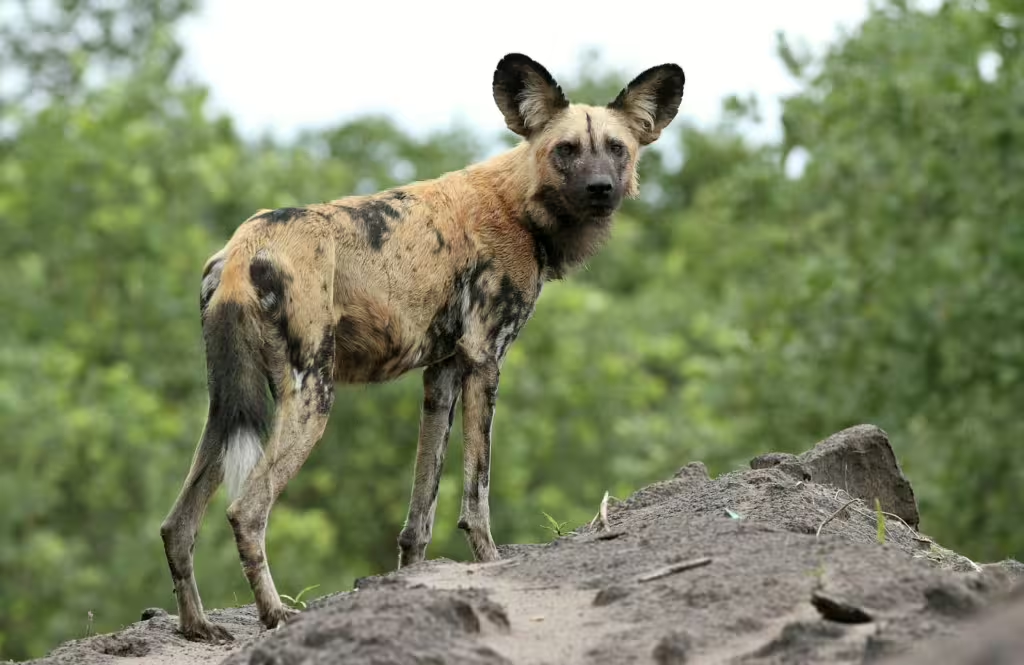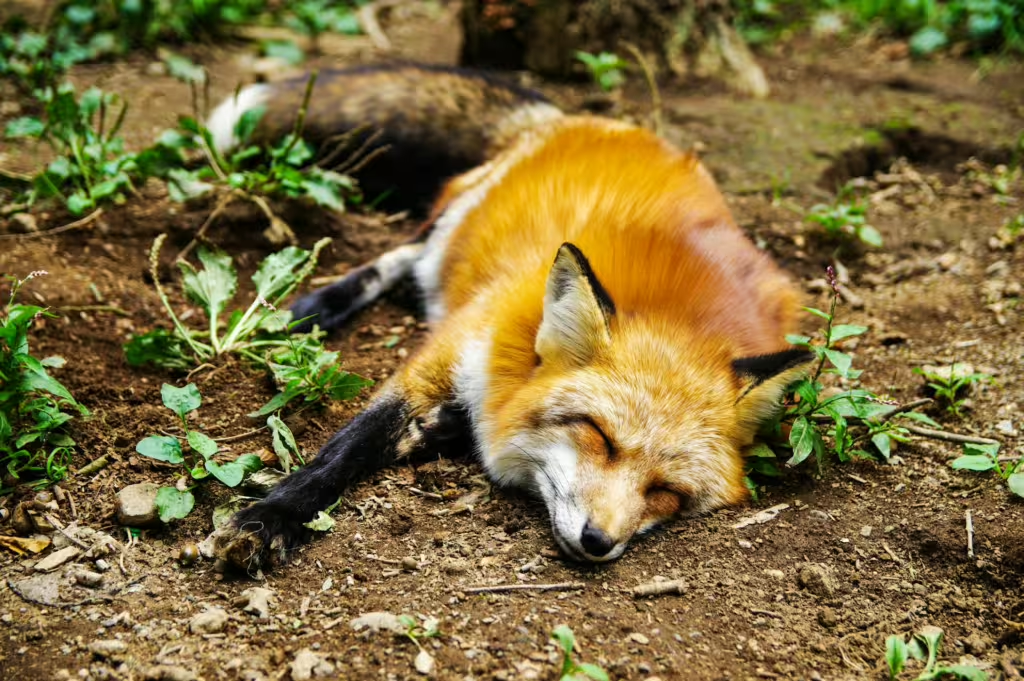Most of our experience in terms of canines has to do with the fluffy, friendly creatures that so many of us share our lives with. They say that dogs are man’s best friend and for good reason, these amiable animals have been humanity’s boon companions for approximately 30,000 years, according to some experts. They protect us, comfort us, and understand us in ways that few other animals do, including our closest evolutionary relatives, the great apes.
Nevertheless, the world of canines is more diverse than some might believe. Indeed, one need only look at the over 300 breeds of domestic dog to see it for themself. The wider animal kingdom is home to some of the most fascinating and formidable canine predators in the world. Whether it be the sleek, cunning fox or the mighty, legendary wolf, the canines of today have evolved to thrive in nearly every environment on the planet.
In this article, we will explore how wild dogs, wolves, dingoes, foxes, domestic dogs, and more. At the same time, we will delve into how and why these canines have wagged their way into the hearts of humans and how our bond with them has evolved over many thousands of years. Finally, we will examine a few of the more endangered canine species that need our attention and some ways that we can and have already begun to help keep them safe.
The Mighty Wolves
We are inspired by fear and awe when we hear the echoing howls of distant wolves. When wolves call out, we feel something, something that touches our very souls. It is no surprise therefore that wolves are undoubtedly one of the most iconic canines known to man. We respect them for their imposing physical beauty, their intelligence, unique social structures, and their adaptability. Among the most impressive species are the gray wolf (Canis lupus), a creature that currently holds the record for the largest of all wild canines. Native to North America, Europe, and Asia, the gray wolf can weigh up to 175 pounds and stand as tall as 33 inches at the shoulder, which is bigger than you might think, especially if you encountered them in person.
The gray wolf’s thick coats, powerful jaws, and remarkable endurance make them formidable predators capable of hunting large prey such as elk, moose, and bison. They generally will not take down these larger prey animals on their own, however, and will generally hunt them down with the help of pack tactics and clever strategies. Highly social creatures, wolves live in tight-knit packs, which rely on cooperation, communication, and hierarchical structures to survive.
Unfortunately, gray wolves and several other species of wolf have faced numerous threats in recent years, including habitat loss, human persecution, and the decline of prey species. In many areas, these animals are still considered endangered or threatened, though several efforts to protect them, including reintroduction programs in places like Yellowstone National Park, have been surprisingly successful. Moreover, programs like these remain crucial for their continued survival.
The Dingo: Australia’s Wild Canine
Australia’s wild dog, the dingo (Canis lupus dingo), is another fascinating member of the canine family. While the very name dingo might sound silly, remember that this creature is from Australia, so it is definitely bound to be far more dangerous than it sounds. That said, they are not originally from the Land Down Under. Many experts believe that dingos were first brought to Australia by early human settlers thousands of years ago. Over time, this once-invasive species adapted to the continent’s unique environment, and the wild remnants of the breed became a distinct subspecies all their own.
Dingoes are medium-sized canines, with slender bodies and long legs and tan fur. They are well-suited to the harsh Australian outback, as well as deserts, and forest ecosystems. They feed primarily on kangaroos, small mammals, and birds. As with many canines, these wild dogs are also highly opportunistic scavengers. Like wolves, dingos are intelligent, social creatures that live in small family groups.
Sadly, even the resilient dingoes face threats from habitat destruction and disease. In addition, modern dingos are disappearing due to hybridization with domestic dogs, which can threaten the unique species’ genetic integrity. That all said, conservation efforts are underway to protect pure dingo populations and ensure their survival in the wild.

The Majestic African Wild Dog
The African wild dog (Lycaon pictus) is sometimes known as the painted wolf, though it is not a true wolf at all. This social canine is one of Africa’s most elusive and endangered predators. With their striking coat patterns of black, white, and yellow, African wild dogs are easily recognizable, but habitat destruction, human-wildlife conflict, and diseases such as rabies and distemper have made them very hard to find these days. Because of these mostly human-derived issues, African wild dogs are critically endangered. So endangered in fact, that fewer than 6,000 individuals remain in the wild as of the writing of this article.
Despite these issues, the Wild Dog’s beauty is matched only by its amazing hunting prowess. Like most canines, these animals are pack hunters and the often work together in order to chase down prey such as antelope and impala. Unlike wolves, which often rely on endurance to take down their prey, African wild dogs use speed and coordination in an effort to exhaust and capture their prey.
Today, several conservation programs are in place to protect these animals. Most of these programs are focused on protecting their habitats and minimizing human-wildlife conflict, though with so few left, the reality is that it might take a miracle to save them in time.

The Arctic Fox: A Master of Adaptation
If you have never seen an arctic fox (Vulpes lagopus), even in a zoo enclosure, don’t feel too bad; that’s kind of the idea. Masters of camouflage, Arctic foxes are small but incredibly resilient canines that make their homes in some of coldest regions of the Northern Hemisphere. The Arctic fox’s thick fur, which changes color with the seasons, means that the critter is perfectly adapted to survive in extreme cold. In addition, the fox’s compact body, short legs, and bushy tail help it to conserve heat, meaning it has the ability to withstand temperatures as low as -50° Fahrenheit; you know, a breezy day on the Arctic Tundra.
The arctic fox primarily hunts small mammals like lemmings, voles, and birds, but it is also an opportunistic scavenger, that has no trouble taking advantage of carrion left by larger predators like wolves or polar bears. Fortunately, Arctic fox populations are currently stable in many areas, though they are facing new challenges due to climate change. As temperatures rise and the Arctic warms, the arctic fox’s range is rapidly shrinking, and the species is being displaced by its larger cousin, the red fox, which is better adapted to life in warmer climates.
The Red Fox: A Clever Survivor
The red fox (Vulpes vulpes) is one of the most widespread and adaptable canines on the planet. These animals can be found across Europe, Asia, North America, and everywhere in between. Known for its reddish-brown fur, sharp features, and bushy tail, the red fox is a master of survival and is a quite clever little critters. These animals can survive in a wide variety of habitats, from idyllic forests to grassy fields and even urban areas. As we mentioned earlier, foxes are not only known to be highly intelligent, they are also highly opportunistic when it comes to finding food. They are omnivorous, feeding on small mammals, birds, fruits, and even human food scraps when they can find them.
Despite their adaptability and intelligence, red foxes face numerous challenges, especially those that find themselves living close to human towns near rural areas. If the book and ensuing movie, The Fantastic Mr. Fox, taught us anything, it is that human persecution and habitat destruction are the cross that every fox must now bear in the modern age. In many regions, these canines are seen as pests, and their populations are controlled through hunting or trapping. That said, in some parts of the world, foxes are thriving and many have learned to coexist with humans in urban areas.

Domestic Dogs: The Biggest Breed
While wild canines capture our imagination with their power and agility, domestic dogs (Canis lupus familiaris) have found their way into our hearts and our daily lives. These creatures have evolved into a unique and beloved companion species, one that has many forms and functions in human life. Among the largest of all these domestic dog breeds is the Great Dane, which is known for its immense size and gentle temperament. Great Danes can stand up to 32 inches tall at the shoulder and weigh as much as 200 pounds, but these Scooby Doo dogs are more gentle giants than ferocious guard dog.
This breed is incredibly affectionate and loyal to their families, even though they started out as hunting dogs back in Germany. In those days, the Great Dane was used to track and hunt large game like deer or wild boars. Today, they are one of the best dogs for those seeking true companionship. Unfortunately, their large size comes with a few challenges of its own. Great Danes are prone to certain health issues, including heart problems and joint issues, which can limit their lifespan.
The Evolution of Dogs and Humans: A Symbiotic Relationship
The relationship between dogs and humans is one of the longest and most enduring partnerships in the history of mankind. Though no one knows for sure, it is believed that dogs were domesticated from wolves around 30,000 years ago. Yet even if the exact timeline is still a subject of debate among scientists, it is clear from archeological remains and artifacts that humans were using and keeping dogs very early on. Ancient humans likely formed a mutually beneficial relationship with wild wolves, who scavenged near their villages and campsites. Over time, the wolves began to tolerate the presence of humans, and the humans were clever enough to recognize the utility of these animals for hunting, guarding, and good ol’ companionship.
As wolves became more domesticated, they began to evolve as we did. Only, where we ended up evolving mostly our mental capacity, they turned into a wide variety of dog breeds, each with its unique characteristics suited to specific tasks or environments. We used dogs for hunting, herding livestock, guarding homes, and keeping us company on the long, cold nights. Through selective breeding, humankind has created an incredible diversity of dog breeds, ranging from tiny Chihuahuas and yapping Shorkies to large working dogs like the Saint Bernard or German Shepherds.
Today, dogs play an essential role in many parts of human society. They are our companions, our helpers, and sometimes even our protectors. Each year, scientists and psychologists learn more and more about the amazing bond that exists between dogs and humans. We know now that this connection is rooted in deep emotional connections, and it has been shown that spending time with dogs can reduce stress, improve mental health, and enhance overall well-being.
True Investigator Says…
As you can see, canines are an incredibly diverse and fascinating group of animals. From majestic gray wolves to toy poodles, these animals are indispensable to their respective ecosystems as well as ourselves. In many ways, their relationship with humans has shaped both species’ evolution in a myriad of helpful ways. Nevertheless, while we enjoy the companionship of domestic dogs, it is essential that we remember their wild relatives, especially those that are currently facing the threat of extinction due to our own mistakes and activities.
Thus, it is our responsibility to protect these magnificent creatures, not only for their sake but for our own; we owe them that much for all they have given us as a species over the centuries. Moreover, their continued existence is vital for the health and balance of the ecosystems in which they live. Through conservation efforts, education, and respect for wildlife, we humans can continue to ensure that the world’s biggest and most interesting canines continue to roam our planet for generations to come.
Discover more from TrueInvestigator
Subscribe to get the latest posts sent to your email.


